
This lesson will help students understand how a shadow is created and allow them to experiment with creating shadows.
- Subject:
- Physical Science
- Material Type:
- Activity/Lab
- Author:
- Jennifer Cann
- Date Added:
- 10/09/2021

This lesson will help students understand how a shadow is created and allow them to experiment with creating shadows.
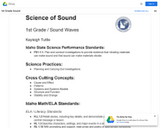
A first grade unit on sound waves.
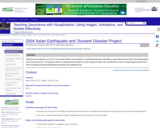
This is a problem-based learning (PBL) group jigsaw activity. The scenario is:
Students are employees of a unit of the United Nations responsible for coordinating disaster relief after a major disaster (the 2004 Asian Earthquake and Tsunami) occurs. The agency needs to understand the situation in each country so that it can coordinate the work of various governments and nongovernmental organizations (NGOs) working in the affected area.
Students are divided into Expert Groups (related to academic specialties such as Economics, Medicine, Political Science, Earth Science, etc.) and spend several days researching their topics. Students are then reassigned to one of seven or eight Country Groups, based on the countries most affected by the disaster. Each country group needs someone representing each expert group. In the scenario, these groups correspond to task forces that must determine what the situation is in each country and try to assess the current need for international assistance.
Students research their country, using internet resources, especially the CIA World Factbook and ReliefWeb, the information coordination website of the United Nations. At a large-group roundtable discussion, each group presents what it has found about its assigned country. As a final product, each student writes an individual report summarizing findings and making recommendations for disaster assistance.
(Note: this resource was added to OER Commons as part of a batch upload of over 2,200 records. If you notice an issue with the quality of the metadata, please let us know by using the 'report' button and we will flag it for consideration.)
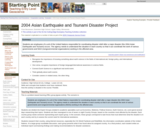
Students are employees of a unit of the United Nations responsible for coordinating disaster relief after a major disaster (the 2004 Asian Earthquake and Tsunami) occurs. The agency needs to understand the situation in each country so that it can coordinate the work of various governments and NGO (nongovernmental organizations) working in the affected area.
(Note: this resource was added to OER Commons as part of a batch upload of over 2,200 records. If you notice an issue with the quality of the metadata, please let us know by using the 'report' button and we will flag it for consideration.)
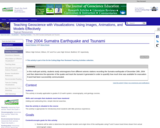
In this multi-part activity, students study seismograms from 3 different seismic stations recording the magnitude 9.0 Sumatra earthquake of December 26th, 2004. By comparing the arrival times of the P and S waves on each seismogram, students determine the distance from the epicenter to each station. Using that data, they can accurately map the location of the epicenter and the precise time of the earthquake. After locating the epicenter, students calculate the position of the tsunami generated by the quake at one hour intervals. From those determinations, predictions are made about how much time people had before the tsunami crashed onto their shores. Finally, students investigate some of the ways people can lessen the impact of the next great tsunami.
(Note: this resource was added to OER Commons as part of a batch upload of over 2,200 records. If you notice an issue with the quality of the metadata, please let us know by using the 'report' button and we will flag it for consideration.)
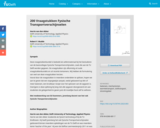
Deze vraagstukkenbundel is bedoeld als oefenmateriaal bij het bestuderen van de basiscolleges Fysische Transportverschijnselen, zoals die aan de TU Delft worden gegeven. De vraagstukken zijn afkomstig uit oude vraagstukkenbundels en uit recente tentamens. Wij hebben de formulering van veel van deze vraagstukken herzien.
Vooral door de vraagstukken in meerdere onderdelen te splitsen, hopen we aan te geven dat een stapsgewijze aanpak, veelal gebaseerd op één of meer balansen, een bruikbaar recept voor het oplossen van de opgaven is. Overigens is deze splitsing bij lang niet alle opgaven doorgevoerd om aan studenten de gelegenheid te geven juist dit moeilijke facet zelf te oefenen.

This activity uses data collected from DART (Deep-ocean Assessment and Reporting of Tsunamis) stations in the Pacific following the 2011 tsunami generated off the coast of Japan. Students are required to map the wave front after 5, 10, and 15 hours to better understand the speed and propagation of the tsunami wave.
(Note: this resource was added to OER Commons as part of a batch upload of over 2,200 records. If you notice an issue with the quality of the metadata, please let us know by using the 'report' button and we will flag it for consideration.)
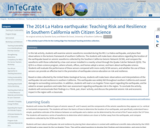
This exercise uses the example of the March 28, 2014 M5.1 La Habra earthquake to teach about earthquake risk and resilience in southern California. Students will examine seismic waveforms recording during the earthquake, as well as read reports from scientific agencies and news outlets to answer basic questions regarding earthquake risk and resilience.
(Note: this resource was added to OER Commons as part of a batch upload of over 2,200 records. If you notice an issue with the quality of the metadata, please let us know by using the 'report' button and we will flag it for consideration.)

Short Description:
The textbook provides an important opportunity for students to learn the core concepts of chemistry and understand how those concepts apply to their lives and the world around them. The book also includes a number of innovative features, including interactive exercises and real-world applications, designed to enhance student learning.
Word Count: 113253
Included H5P activities: 42
(Note: This resource's metadata has been created automatically by reformatting and/or combining the information that the author initially provided as part of a bulk import process.)

This resource is a video abstract of a research paper created by Research Square on behalf of its authors. It provides a synopsis that's easy to understand, and can be used to introduce the topics it covers to students, researchers, and the general public. The video's transcript is also provided in full, with a portion provided below for preview:
"It might sound like bad advice, but for Japanese men, eating a high-carb diet could actually be a good thing—only, it depends on the type of carb. Because eating too much of the wrong ones could have dire consequences. These are the findings reported by Professor Chisato Nagata and colleagues from the Gifu University Graduate School of Medicine in Japan—recipients of the inaugural British Journal of Nutrition Paper of the Year award. Their paper, published in volume 122, issue 7 of BJN, describes a subset of results from the Takayama Study. The study was launched in 1992 to link dietary and lifestyle factors to morbidity from cancer and other diseases. Participants filled out a questionnaire at baseline on how frequently they ate various foods..."
The rest of the transcript, along with a link to the research itself, is available on the resource itself.

This resource is a video abstract of a research paper created by Research Square on behalf of its authors. It provides a synopsis that's easy to understand, and can be used to introduce the topics it covers to students, researchers, and the general public. The video's transcript is also provided in full, with a portion provided below for preview:
"The Journal of Materials Research is proud to announce the 2019 Gordon E. Pike JMR Paper of the Year Award. This award recognizes excellence in advancing materials knowledge through written scholarship. This year’s honors go to a team of researchers from China and the US for their report on a new form of flexible and rechargeable supercapacitor wire, which was published in the September 14, 2019 issue of Journal of Materials Research. With the rapid growth of portable and wearable electronics, researchers face many important challenges. They’re tasked with fabricating devices that are smaller, lighter, and more flexible than ever—all while delivering the same or higher levels of performance. Wire-shaped supercapacitors are among the most promising technologies developed to address these challenges. These flexible devices store and deliver energy in the form of tightly wound fibers of electrochemically active materials, such as carbon nanotubes..."
The rest of the transcript, along with a link to the research itself, is available on the resource itself.
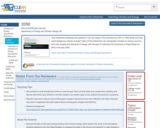
This interactive addresses the question if we can reduce CO2 emissions by 20% of 1990 levels and help avoid dangerous climate change? Users of this interactive can manipulate changes to various sources and uses (supply and demand) of energy with the goal of reducing C02 emissions in Great Britain by 80% in the year 2050.
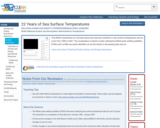
This NOAA visualization on YouTube shows the seasonal variations in sea surface temperatures and ice cover from 1985 to 2007. The visualization is based on data collected by NOAA polar-orbiting satellites. El NiÃo and La NiÃa are easily identified, as are the trends in decreasing polar sea ice.

This lesson will allow students to select and share what details are important on a topic. Groups of students will research a topic and then discuss and determine the top 25 important things someone should know about the topic.
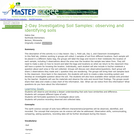
This activity is designed for a primary classroom (outdoors & indoors) investigation where students collect and investigate soil samples and describe the soils, looking for similarities and differences. Students develop a method of recording the data colleted and can present the information gathered.

Learn the importance of each and every job within the hive! This lesson includes learning objectives, material and resource lists, background information, activities, reading selections, writing assignments, a game, assessments, and support documents. See the Educator's Guide for more video links and recommended readings.
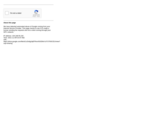
Os painéis elaborados e disponibilizados para implantação no geossítio Vila Pedra, são produtos geodidáticos de geoeducação a serem utilizados por professores e alunos de ensino básico do município de Irituia e visitantes do local. Eles contêm informações e interpretações geocientíficas e de curiosidades presentes na formação geológica do geossítio, em uma linguagem acessível, dando suporte a sua utilização como espaço de ensino não formal e à visitação turística mais interessante e de forma sustentável, contribuindo para a divulgação e valorização do geossítio.
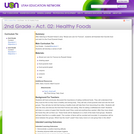
After listening to Russell Hoban's story "Bread and Jam for Frances", students will illustrate their favorite food and add it to the Food Pyramid Graph.

Long Description:
Authors and editors: Haley Zanga, Audrey Boraski, Alana Olendorf, Marisa Benjamin, Haley Fantasia, Simone McEwan, Jaime Marsh, Melissa Wydra, Will Trautmann, Emily Michaeles, Maddi Ouellette, Andrew Fuhs, Allie Tolles, Suki Graham, Mary Swain, Devon Audibert, Sarah Larsen, Emma Verville, Tim Brodeur, Jason Charbonneau, Christian Paparazzo, Bryce Chounard, Malisa Rai, Jennifer Rosado, Morgan Tupper
Chief Editors, final revision: Haley Zanga, Audrey Boraski, Alana Olendorf
Chief Editor, first draft: Andrew Fuhs
Managing Editors and Editorial team leaders, first draft: Bryce Chounard, Emily Michaeles, Maddi Ouellette
Word Count: 40031
(Note: This resource's metadata has been created automatically as part of a bulk import process by reformatting and/or combining the information that the author initially provided. As a result, there may be errors in formatting.)
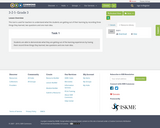
This tool is used for teachers to understand what the students are getting out of their learning by recording three things they learned, two questions and one main idea.